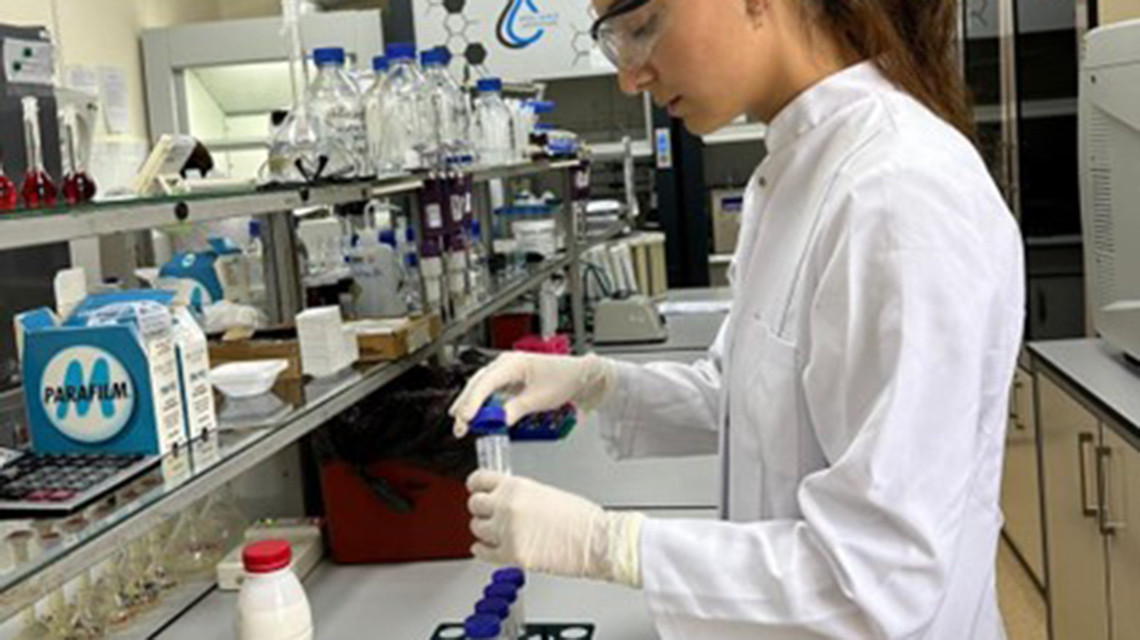Georgia has been working to enhance food safety and increase international trade since its government entered into an Association Agreement with the European Union (EU) in 2016. Now, having received assistance from the IAEA in cooperation with the Food and Agricultural Organization (FAO) of the United Nations, Georgia's State Laboratory of Agriculture (SLA) is able to use a range of analytical techniques, including radio receptor assay, to screen foods for various chemical hazards, such as animal drug residues, and for contaminants, such as mycotoxins, which could otherwise represent risks to human health.
The EU Association Agreement requires Georgia to 'approximate' its standards, legislation and regulations governing food safety, animal feed and animal production to the existing control mechanisms in the EU by 2027, including inspection, supervision and monitoring. This will enable Georgians to receive and consume safe and good quality foods and will also help ensure that these foods are competitive for international trade, fulfilling the requirements of EU and other markets. Animal products, such as meat and dairy/milk, are considered high-risk products and therefore, to access the EU market, certain requirements, including testing, must be met.

Analysis of food samples including milk at the SLA in Georgia (Photo: A. Gulbani/SLA, Georgia)
Georgia's Ministry of Agriculture is one of several government institutions tasked with implementation of the new Association Agreement with the EU. A total of 300 regulations have been promulgated so far, and the implementation of 188, including those related to food safety, is now ongoing. The Ministry of Agriculture depends on the SLA, the national Laboratory for agriculture, to meet its obligations as regards to food safety testing. This laboratory is mandated to monitor chemical residues and related hazards in agricultural products that are a danger to consumers and the market. However, despite its mandated responsibilities, the SLA had only limited capabilities and was unable to adequately meet the needs of the Ministry and the country. For example, it could not analyse pesticides, veterinary drug residues and toxic metals in food. With the support provided through the IAEA technical cooperation programme, this has changed for the better.
Following training of several SLA personnel and the provision of technical assistance, including analytical method protocols and equipment the SLA is now able to perform tests that were previously impossible. For example, new tests can be conducted to analyse fish, meat and milk for residues of drugs such as chloramphenicol and nitroimidazoles. Chloramphenicol is prohibited for use in food production in many countries due to its harmful nature to consumers including its potential to cause cancer. Other methods were established for testing pesticides in milk and water as well as residues of sulfonamide and aminoglycoside antimicrobials (associated with antimicrobial resistances) in honey. The number of samples analyzed by the SLA per year has tripled since 2021, an indication of the increased demand for SLA's service and its improved capabilities.
"Improving the sanitary and phytosanitary system, as well as approximation to European standards, enhances the safety of Georgian foods and raises trust on the global market, bolstering the growth of our country's exports," said Ana Gulbani, Deputy Director of the SLA in Georgia.
"It was a pleasure to see that the implementation of the technical cooperation project made it possible for us to introduce new analytical methods so that the SLA can address gaps in service delivery and meet country needs," added Gulbani.
"The lack of better equipped and well-functioning laboratories is a major bottleneck to a country's food safety control system, negatively impacting consumer safety and trade of agricultural products. We are very happy to provide technical support to our Member States to assist them in overcoming such challenges," said Dongxin Feng, Acting Director of the Joint FAO/IAEA Centre of Nuclear Techniques in Food and Agriculture.
The radio receptor assay techniques, which have recently been acquired, utilize the comparative advantage of radioisotopes such as carbon-14 and tritium (H-3). Radiotracers, as the name suggests, can be used to trace and measure even very low levels of these hazards. A large number of food samples can be screened quickly with these techniques, saving analytical costs and time. The radiometric screening of hazards in food is complemented by chromatographic and spectrometric techniques along with stable isotopes such as deuterium (H-2) and carbon-13.






